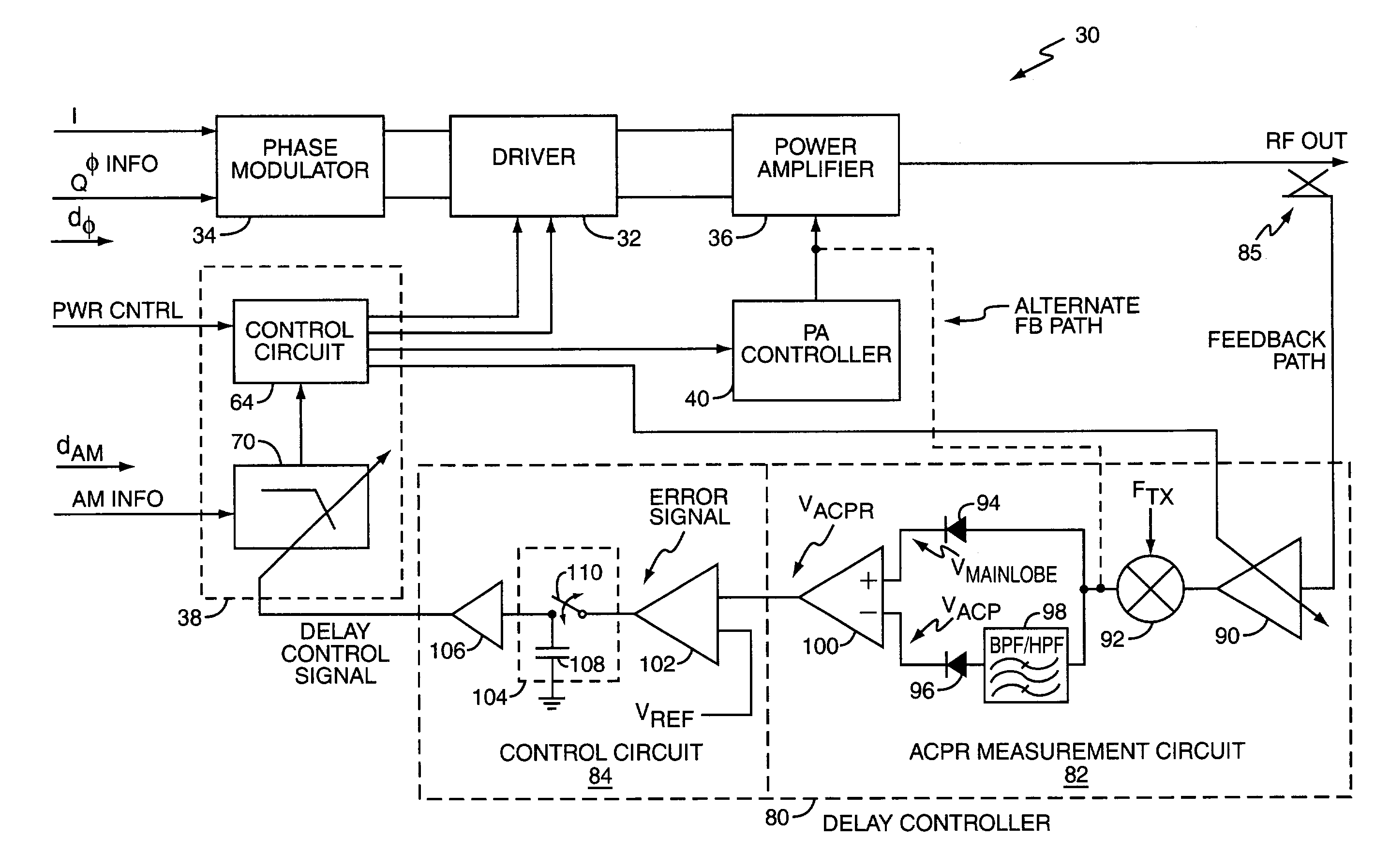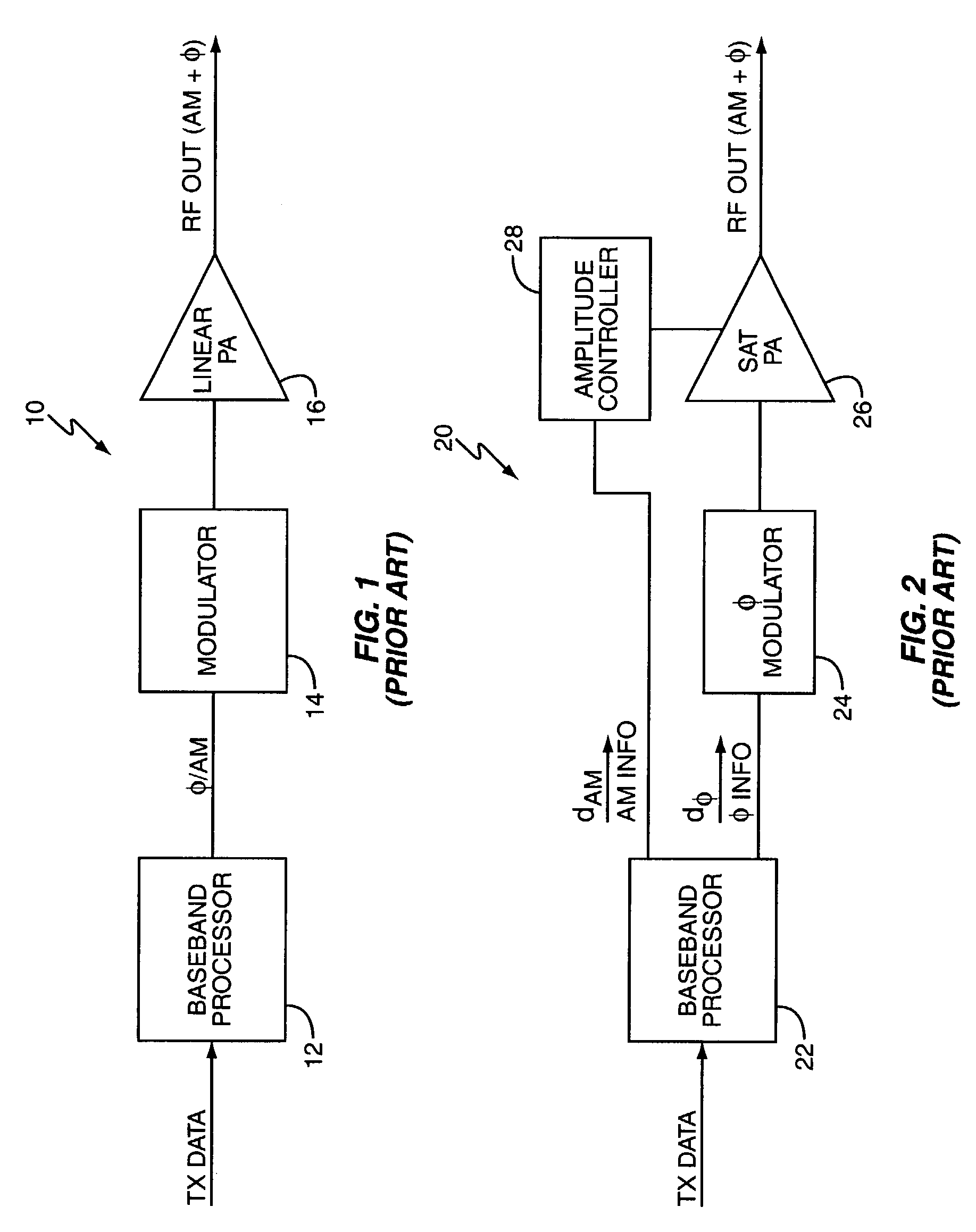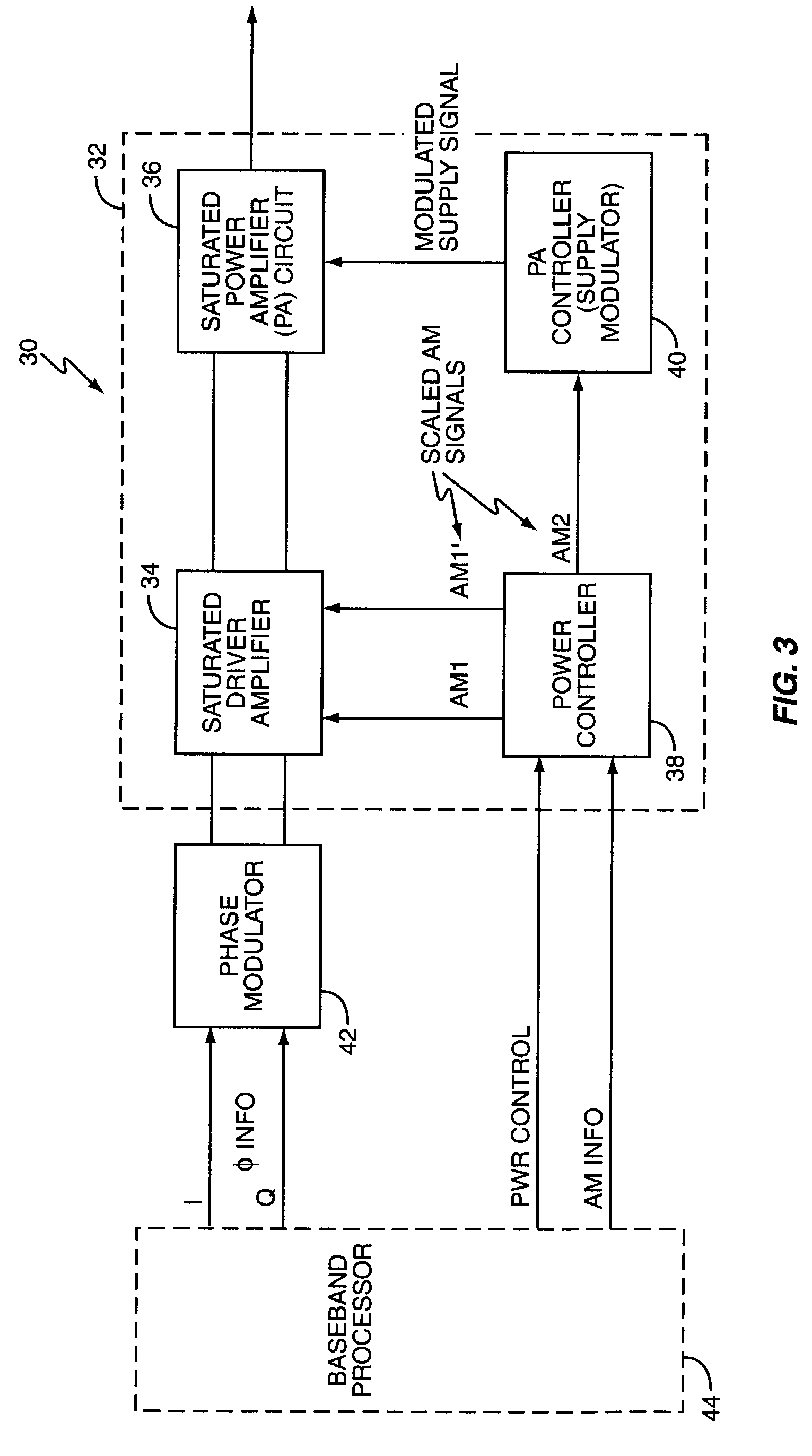Polar modulation transmitter
a polar modulation and transmitter technology, applied in the field of wireless communication, can solve the problems of limiting battery life, polar modulation, power efficiency loss, etc., and achieve the effect of improving performance in polar modulation transmitters and reducing the adjacent channel power ratio (acpr)
- Summary
- Abstract
- Description
- Claims
- Application Information
AI Technical Summary
Benefits of technology
Problems solved by technology
Method used
Image
Examples
Embodiment Construction
[0030]FIG. 1 illustrates a typical linear transmitter 10 for use in a wireless communication device or system. Transmitter 10 comprises, in this simplified depiction, a baseband processor 12, a modulator 14, and a linear power amplifier 16. Desired transmit data, such as a digital bit stream of channel-encoded transmit data is converted into a corresponding stream of modulation symbols including both phase and amplitude modulations by the baseband processor 12. These modulation symbols drive the modulator 14, which imparts corresponding phase and amplitude modulation to a RF carrier frequency signal (not shown). The modulated carrier signal output from modulator 14 serves as an input signal to the linear power amplifier 16, which generates a corresponding RF output signal having both phase and linear amplitude modulations and suitable for transmission via an associated antenna assembly (not shown).
[0031]Key to its acceptable performance, the linear power amplifier 16 must impart lin...
PUM
 Login to View More
Login to View More Abstract
Description
Claims
Application Information
 Login to View More
Login to View More - R&D
- Intellectual Property
- Life Sciences
- Materials
- Tech Scout
- Unparalleled Data Quality
- Higher Quality Content
- 60% Fewer Hallucinations
Browse by: Latest US Patents, China's latest patents, Technical Efficacy Thesaurus, Application Domain, Technology Topic, Popular Technical Reports.
© 2025 PatSnap. All rights reserved.Legal|Privacy policy|Modern Slavery Act Transparency Statement|Sitemap|About US| Contact US: help@patsnap.com



